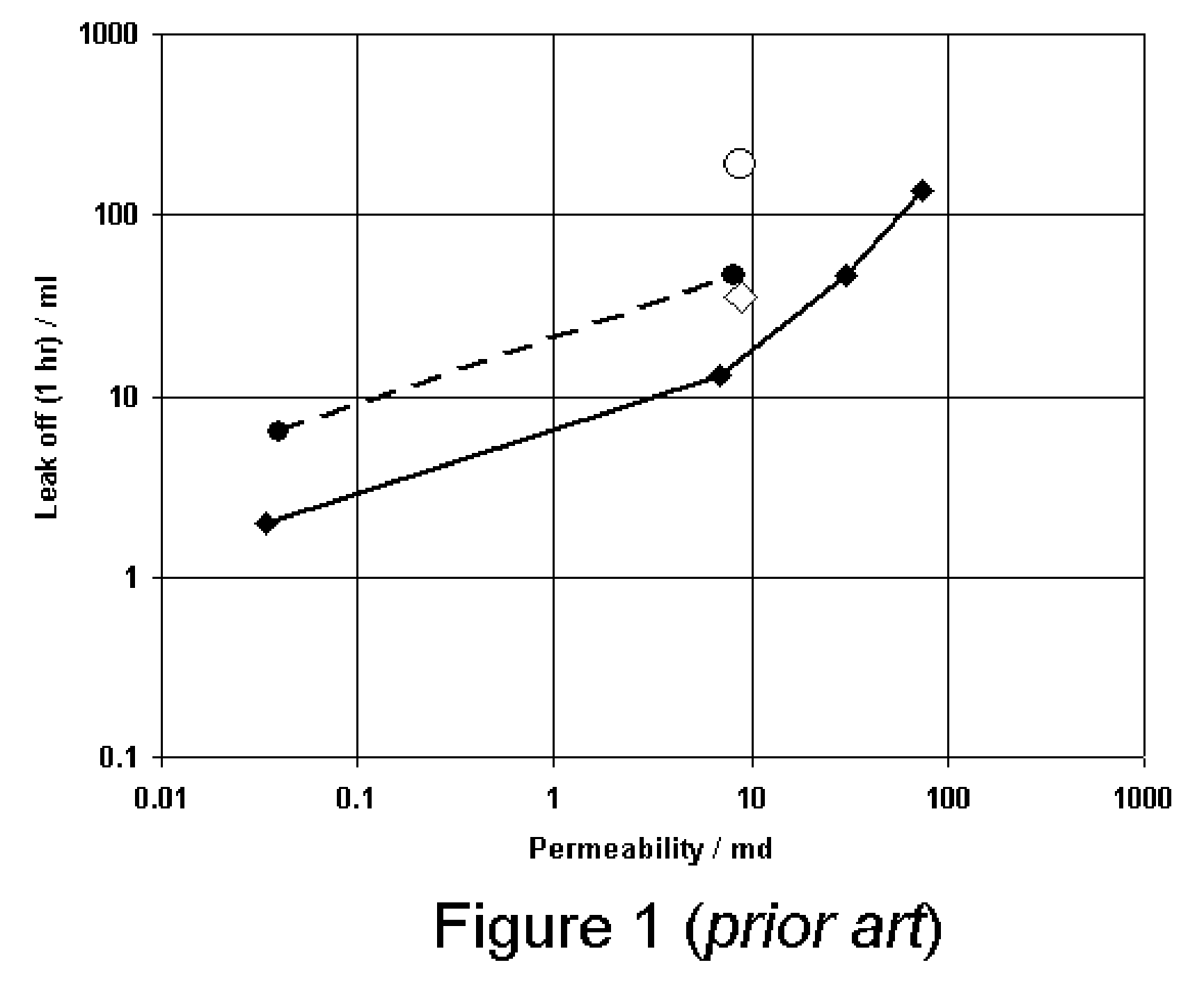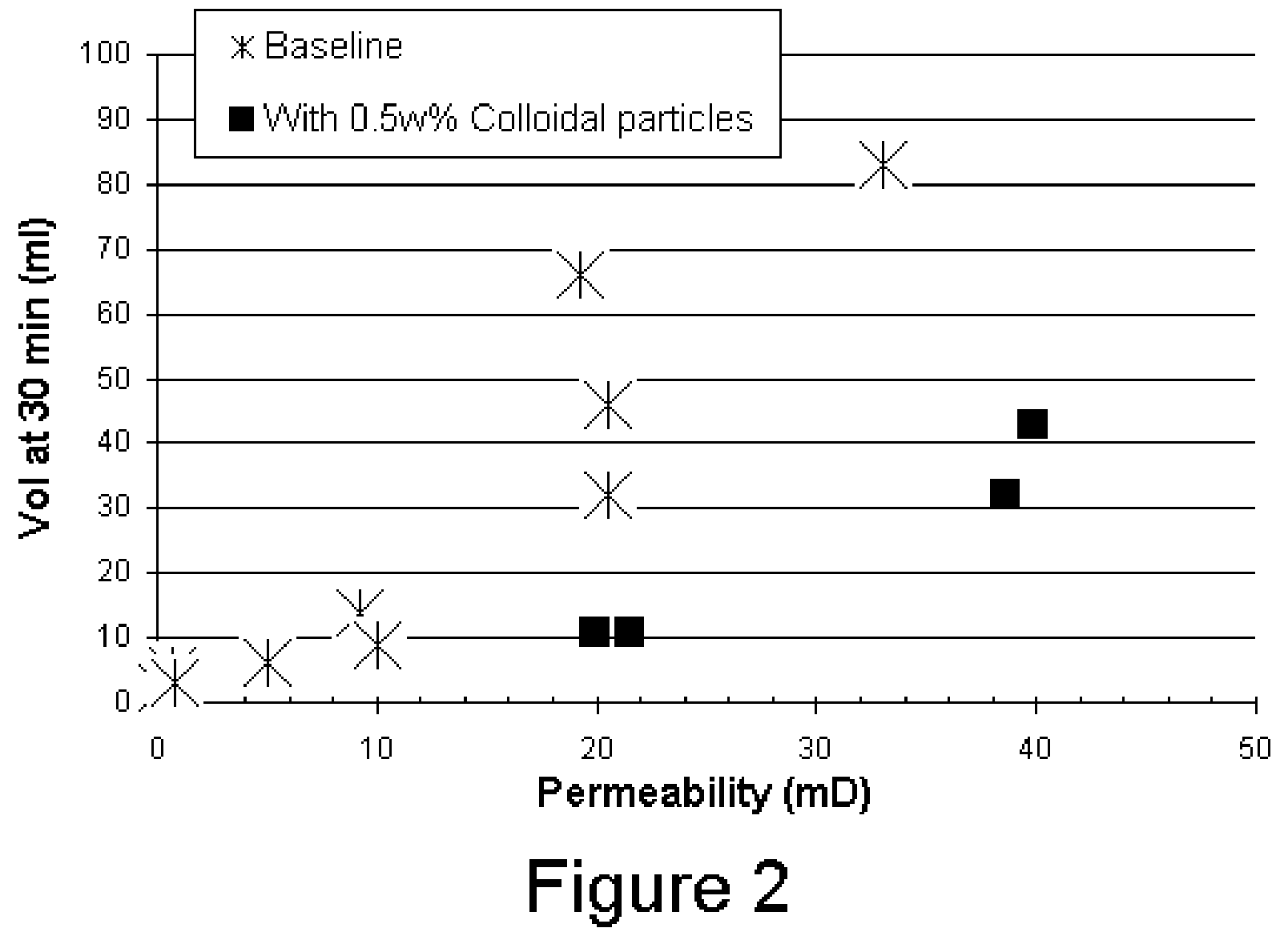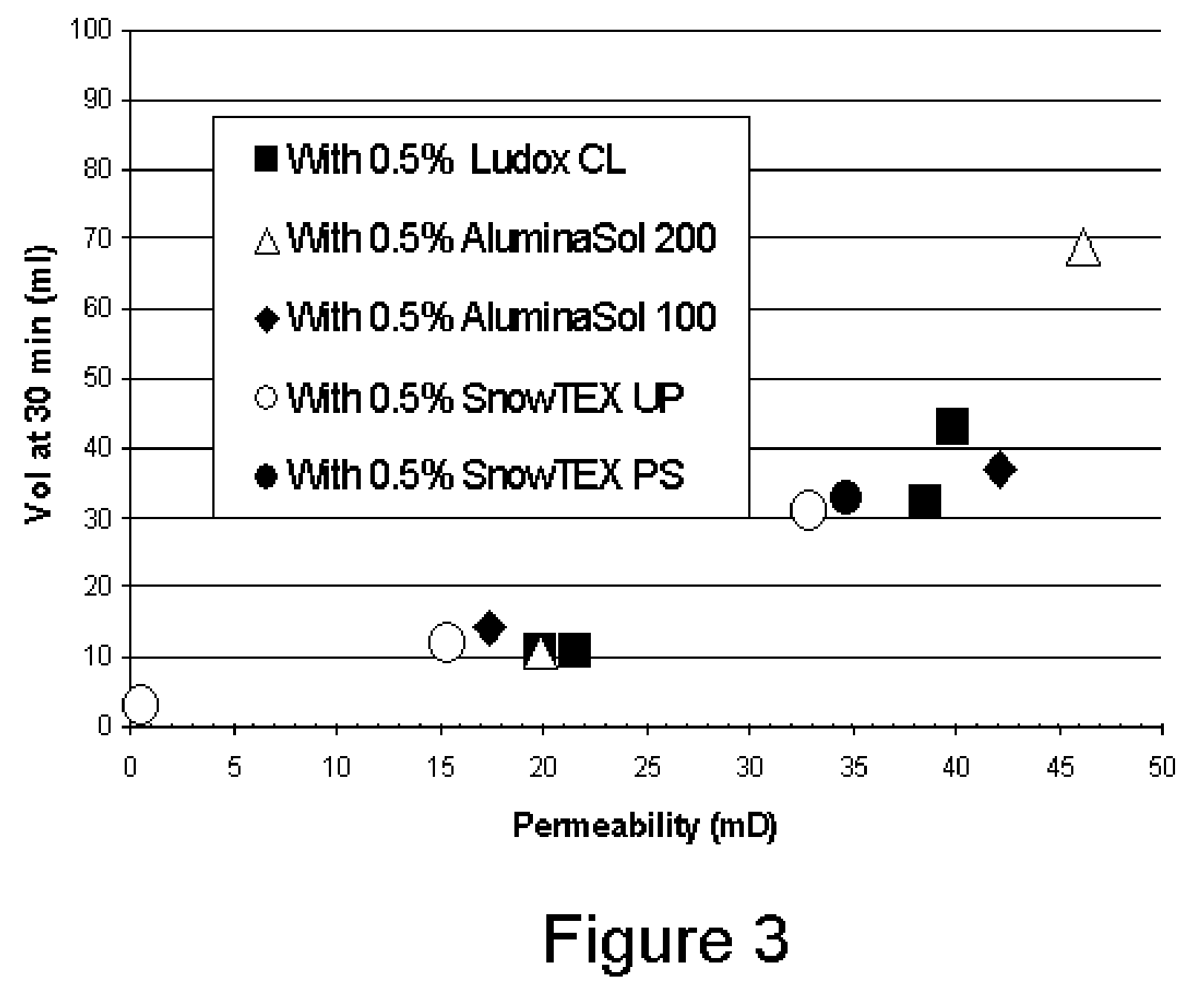Methods For Controlling The Fluid Loss Properties Of Viscoelastic Surfactants Based Fluids
- Summary
- Abstract
- Description
- Claims
- Application Information
AI Technical Summary
Benefits of technology
Problems solved by technology
Method used
Image
Examples
examples
[0045]FIG. 1 presents the result of a comparison of the total fluid loss at 60 minutes (in ml) over a range of permeabilities. The lower curve (full lozenges) was obtained with brine saturated cores and an aqueous solution at 3 wt % potassium chloride and 3 wt % N-erucyl-N,N-bis(2-hydroxyethyl)-N-methyl ammonium chloride. The open lozenge corresponds to a test made with the 3 wt % fluid on an oil saturated core. A strong increase in leak-off is observed where the core permeability is grater than 5 mD.
[0046] When lower concentrations of surfactant are used (1 wt %, open and full circles), leak-off greater than 20 ml are observed for formation permeabilities of about 2 mD. At about 10 md permeability, a leak-off of more than 100 ml per hour is achieved with the 1 wt % surfactant solution.
[0047] Similar results are obtained with an aqueous solution containing a betaine surfactant that contains an erucic acid amide group (including a C21H41 alkene tail group) as shown FIG. 2 where the...
PUM
| Property | Measurement | Unit |
|---|---|---|
| Length | aaaaa | aaaaa |
| Diameter | aaaaa | aaaaa |
| Diameter | aaaaa | aaaaa |
Abstract
Description
Claims
Application Information
 Login to View More
Login to View More - R&D
- Intellectual Property
- Life Sciences
- Materials
- Tech Scout
- Unparalleled Data Quality
- Higher Quality Content
- 60% Fewer Hallucinations
Browse by: Latest US Patents, China's latest patents, Technical Efficacy Thesaurus, Application Domain, Technology Topic, Popular Technical Reports.
© 2025 PatSnap. All rights reserved.Legal|Privacy policy|Modern Slavery Act Transparency Statement|Sitemap|About US| Contact US: help@patsnap.com



